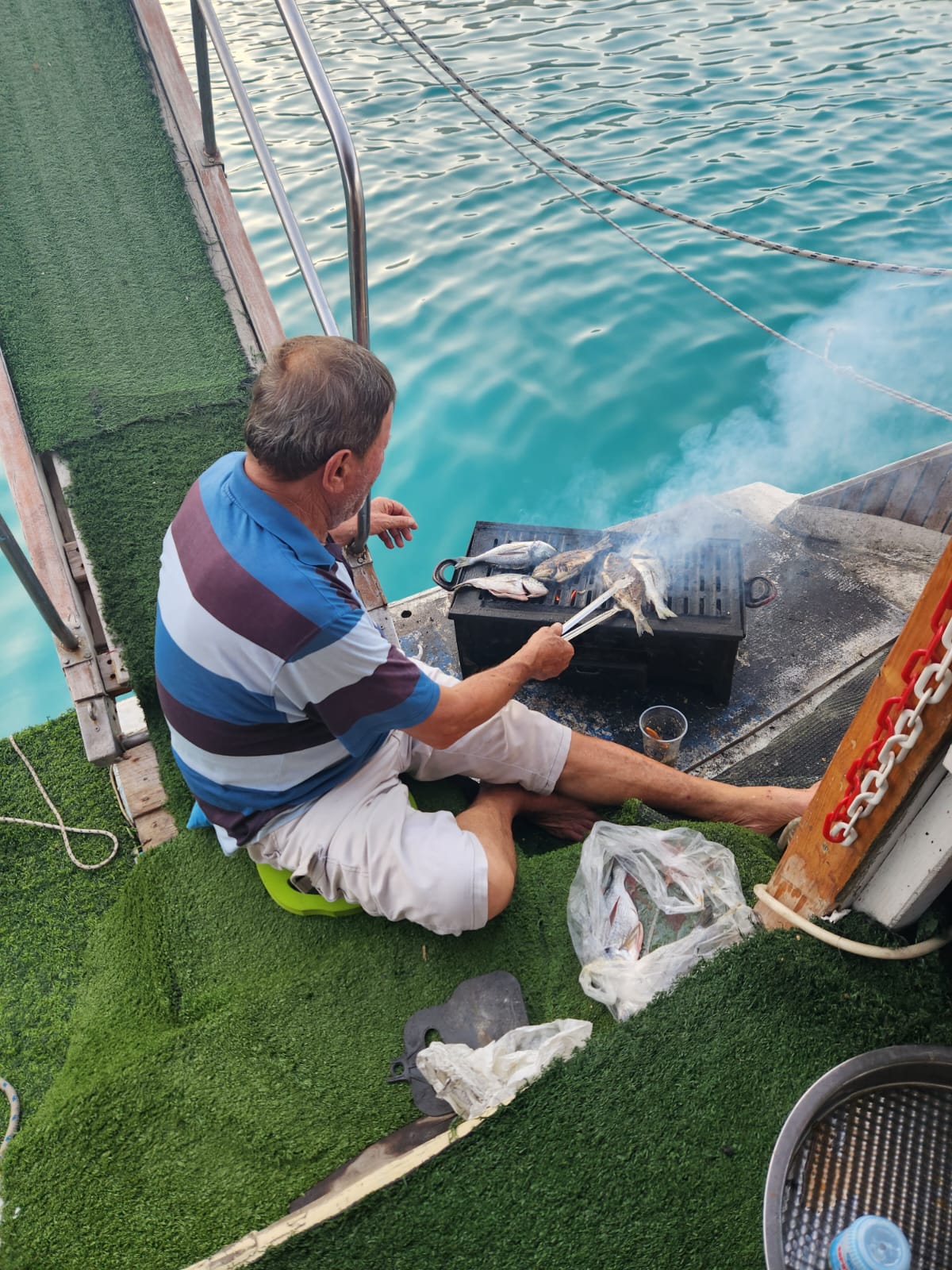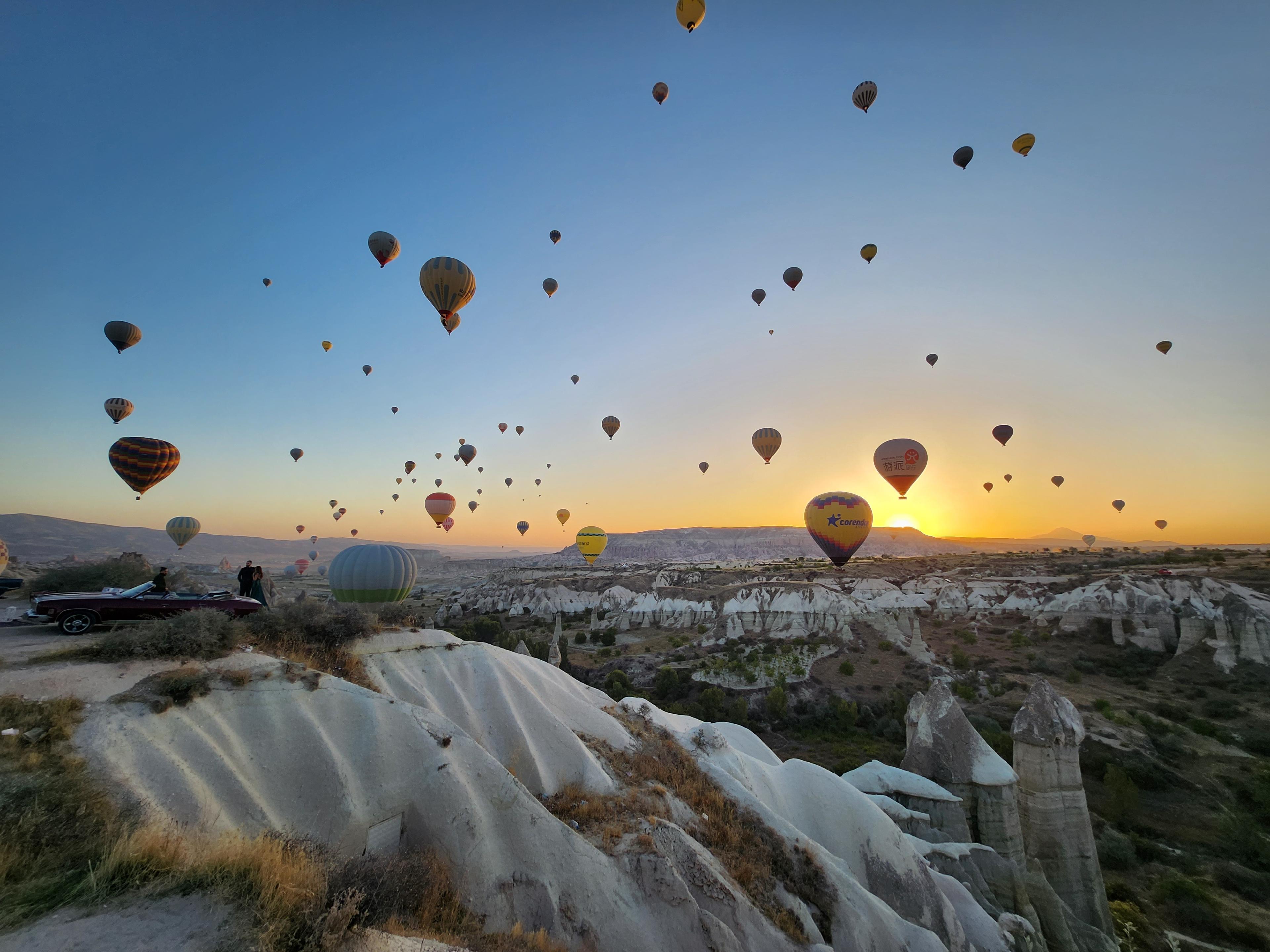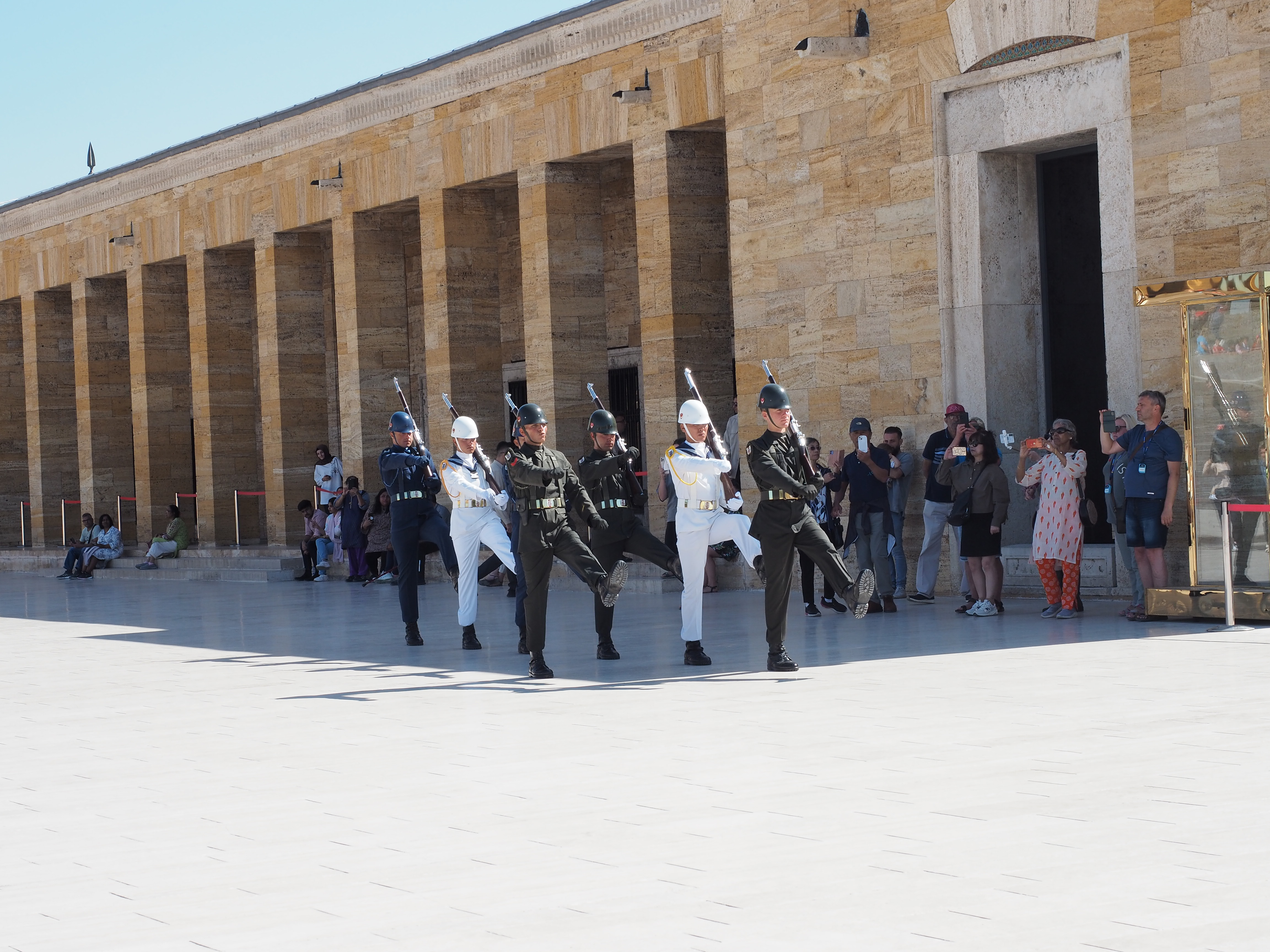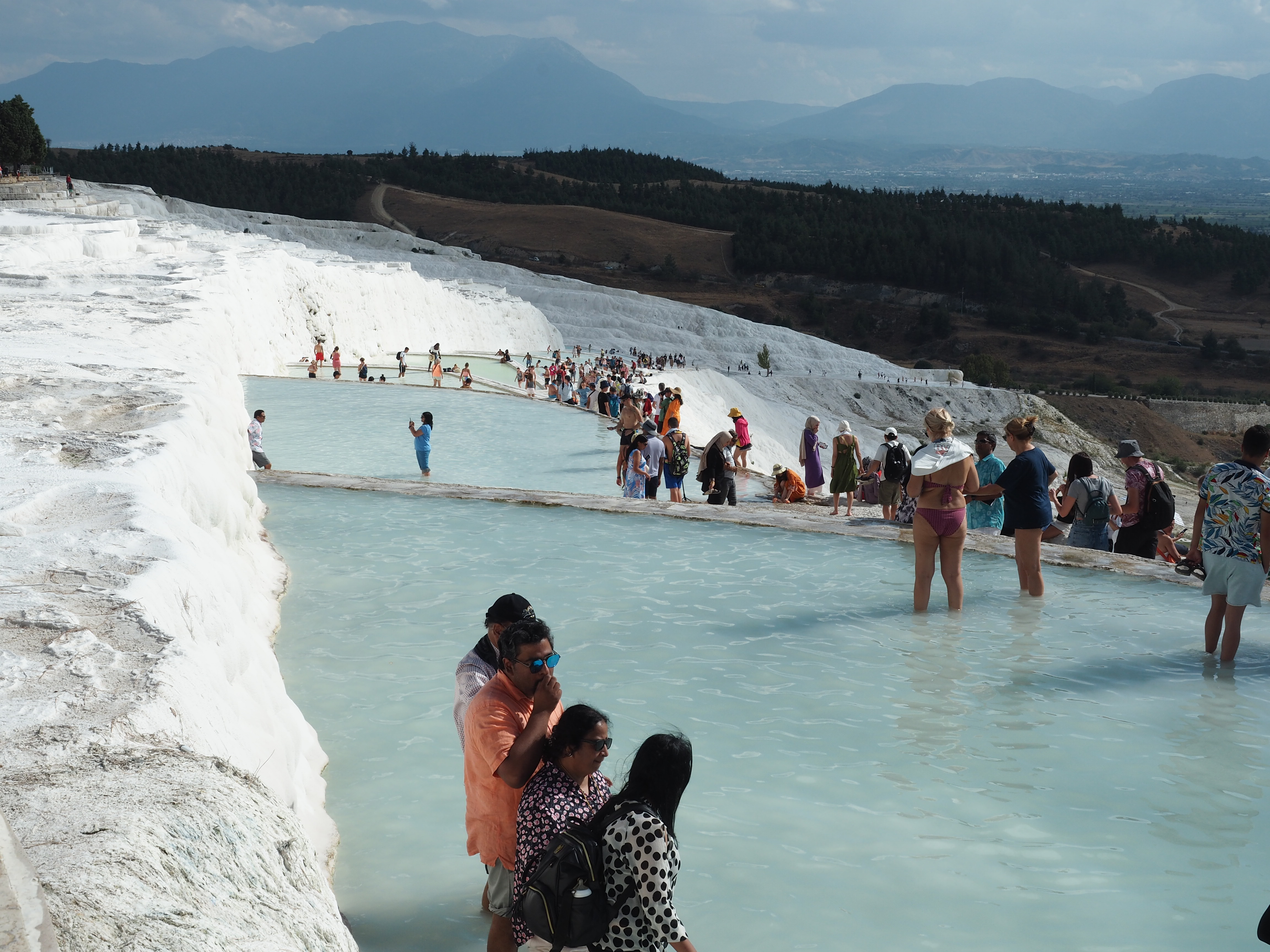Embarking on an 18-day journey through Turkey was a symphony of history, culture, and breathtaking landscapes, with each destination offering a unique melody. Leaving from Istanbul, we traveled to Ankara with an overnight in Bolo to break the drive. In Ankara, the solemn Mausoleum of Atatürk set the tone for the exploration and education, paving the way for an amazing trip. We would only really appreciate Atatürk after our segway to Galipoli - but this was a good start.
The Mausoleum of Atatürk holds profound significance as the final resting place of Mustafa Kemal Atatürk, the visionary founder and first President of the Republic of Turkey, serving as a symbol of national identity and a testament to his pivotal role in shaping the modern Turkish state through sweeping political, cultural, and social reforms.
From there, we drove to Cappadicia. Cappadocia's whimsical landscapes, marked by hot air balloon rides over Love Valley and guided tours of the Göreme Open Air Museum, were a surreal chapter in the journey. The Göreme Open Air Museum stands as a UNESCO World Heritage Site, embodying the historical and cultural richness of Cappadocia, with its cave churches and dwellings adorned with intricate frescoes, offering a remarkable glimpse into the region's Byzantine heritage and the development of early Christian monasticism. We weren't allowed to take pictures inside so I can't share - but they were very revealing.

Not to far away, the underground cities of Cappadocia, such as Derinkuyu and Kaymaklı, bear witness to the ingenuity of ancient civilizations, providing a fascinating labyrinth of subterranean chambers and tunnels that served as intricate underground communities, offering shelter, storage, and places of worship during times of historical upheaval.

We also partook in an authentic Whirling Dervish ceremony and a very active Turkish Night, in a Cave Restaurant with local foods and traditional folklore dancing.

The road to Konya, punctuated by the largest caravanserai and the graves of Mawlana Jalal al-Din Rum, echoed with the footsteps of history. A caravanserai, serving as a vital element along historical trade routes, such as The Silk Route, had the primary purpose of providing shelter, sustenance, and security to traveling merchants and their caravans. Typically, camels and their caravan occupants stayed in these roadside inns for three nights, allowing both the animals and traders to rest, recuperate, and replenish their strength before embarking on the next leg of their demanding journeys across long and challenging trade routes.
Caravanserai
Rumi, also known as Mawlana Jalal al-Din Rum, holds profound significance as a 13th-century Persian poet, Islamic scholar, and mystic whose teachings and poetry, collected in works like the "Mathnawi" and the "Divan-e Shams-e Tabrizi," continue to inspire spiritual seekers globally, transcending cultural and religious boundaries.
Inside the Museum that houses Rumi's Tomb
The coastal delights of Antalya, sailing around Kekova Island from Demre, and a day in Kas offered a serene interlude before delving into the ancient ruins of Hierapolis and Pamukkale in Selçuk.

Sunset in Kas
On our sail boat, we had fish that was freshly cooked off the back of the boat! And we floated in the Mediterranean sea resting on noodles, more for colour than as a floatation device. The sea was pretty salty!

The theatre in Hierapolis, an ancient Greco-Roman city, is a testament to architectural grandeur, showcasing a well-preserved marvel that once accommodated thousands of spectators and served as a venue for various performances, reflecting the cultural richness of the city in antiquity.

The calcium pools in Pamukkale, known as the "Cotton Castle," are a mesmerizing natural wonder, where terraces of gleaming white travertine, formed by mineral-rich thermal waters, create a surreal landscape that not only captivates the eye but also offers therapeutic bathing experiences dating back to ancient times.
The historical tapestry continued with visits to Euphesus, Troy and Gallipoli, leading to three days in Istanbul, where the Basilica Cistern, Topkapi Palace, Hagia Sophia, the Hippodrome, and the Blue Mosque unfolded like chapters in a grand novel.
Euphesus

Canukkale - about 17 kilometers from the City of Troy - and hence this Icon

Trenches in Galipoli where New Zealand and Australian soldiers fought just feet away from similar trenches on the other side of the road
Navigating the new city, I rode the tram, walked through the bustling streets to Taksim Square, and indulged in the rich history of this vibrant city.

The Blue Mosque

The Basilica Cistern
Hagia Sophia
The main street in Istanbul that leads to Taksim Square is called İstiklal Avenue (İstiklal Caddesi in Turkish).

Monument of the Republic, Taksim Square
This bustling and vibrant pedestrian street is a major shopping and cultural thoroughfare, lined with shops, cafes, restaurants, and historical buildings, ultimately culminating in the iconic Taksim Square. The English translation for "İstiklal" is "Independence" or "Liberty." Therefore, İstiklal Avenue can be translated as "Independence Avenue" or "Liberty Avenue." There is a statue in Taksim Square that features Atatürk known as the "Monument of the Republic". It was erected to commemorate the founding of the Republic of Turkey in 1923 and to honor Mustafa Kemal Atatürk. The monument symbolizes the ideals of the Republic, including secularism, modernization, and independence. Atatürk's prominent presence in the monument reflects his pivotal role in leading Turkey through a period of significant political, cultural, and social reforms.
Amidst the historical wonders, the culinary landscape of Turkey left an indelible mark. Mezze plates became a culinary bridge, offering a diverse selection of flavours that reflected the regional influences. Whether in Cappadocia or Antalya, these appetizers provided a contemporary taste of Turkey's rich cultural heritage. The fish wraps and tantuni kebabs were culinary highlights that blended seamlessly with the surroundings. Pide and testi kebabi added layers to the gastronomic journey, the former with its boat-shaped crust and the latter cooked in a sealed clay pot. The sweetness of Turkish delight, the richness of baklava, and the aromatic allure of Turkish coffee and tea further heightened the culinary experience, turning meals into sensory celebrations of Turkish traditions.

Navigating Istanbul is a seamless blend of history and modernity, exemplified by the ease of transit from the old to the new city. Crossing the iconic Galata Bridge provides a picturesque journey connecting the historic Sultanahmet area to the vibrant neighborhoods of Beyoğlu. Embracing the city's historical roots, one of the oldest tunnel trams, Tunel, offers a charming subterranean ride through the Beyoğlu district, presenting a unique transportation experience that seamlessly links the past and present. To truly appreciate Istanbul's dual continents, a cruise on the Bosphorus Sea is a must, where the city's skyline unfolds against the backdrop of Europe and Asia, offering a tranquil yet captivating journey along the waterway that has shaped Istanbul's history and identity.
Please reach out to me if you’d like to explore Turkey. You can find my contact details here: card.penguins2polarbears.com
You can sign up to schedule a consultation if you have a trip in mind or sign up for my weekly newsletter for more inspiration.







